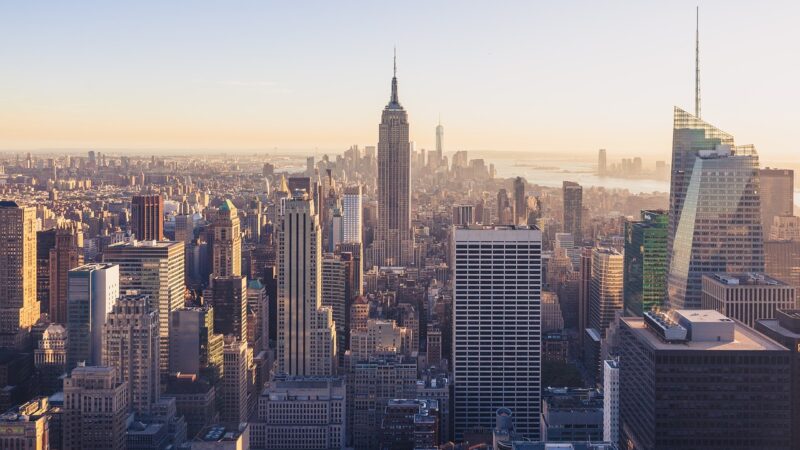How Trees Benefit Cities Beyond Just Air Quality
November 10, 2024

Trees are often recognized for their ability to purify the air and improve the overall environmental quality in urban areas. However, their benefits extend far beyond just air quality. In this article, we’ll explore the myriad ways trees enhance urban living, contribute to public health, boost the economy, and promote community well-being.
1. Enhancing Urban Aesthetics
Trees play a pivotal role in enhancing the visual appeal of urban environments. They create green corridors, parks, and canopies that beautify neighborhoods, making them more inviting to residents and visitors alike. A well-landscaped area can significantly increase property values and attract businesses.
Studies have shown that landscapes adorned with trees can increase a property’s value by as much as 15%. This not only benefits homeowners looking to sell but also encourages local governments to invest in urban greenery.
2. Reducing Urban Heat Island Effect
Urban areas are often hotter than surrounding rural areas due to human activities and development, a phenomenon known as the urban heat island effect. Trees provide much-needed shade, reducing temperatures in their vicinity and consequently lowering energy costs for air conditioning during hot months.
According to the U.S. Environmental Protection Agency (EPA), properly placed trees can reduce energy use for cooling by 15% to 50%. This cooling effect can lead to reduced greenhouse gas emissions and a smaller carbon footprint for cities.
3. Improving Mental Health and Well-Being
Evidence suggests that spending time in green spaces improves mental health and reduces stress. Trees and green areas provide a calm, peaceful environment that encourages outdoor activities and social gatherings. Studies correlating tree presence in urban areas with lower anxiety and depression rates support this notion.
For instance, a study by the University of Exeter found that participants who moved to greener neighborhoods reported more happiness and higher life satisfaction. Trees not only enhance the beauty of a community but can also improve residents’ quality of life.
4. Enhancing Biodiversity
Cities often lack biodiversity due to the predominance of concrete and asphalt. Trees provide essential habitats for various species, including birds, insects, and small mammals, thus promoting urban biodiversity. This creates a healthier ecosystem within the city as these species contribute to pollination, pest control, and soil health.
Urban trees can also support various ecosystems within cities, making them more resilient to environmental changes and climate conditions. With the help of urban trees, cities can thrive ecologically, leading to sustainable urban development.
5. Improving Public Safety
Trees contribute to public safety in a variety of ways. Firstly, they can enhance visibility and reduce crime rates. Well-maintained wooded areas and parks can foster a sense of community and vigilance, thus deterring criminal activities. Moreover, trees also play a role in traffic calming; streets lined with trees encourage slower driving and reduce the likelihood of accidents.
Well-placed trees can act as natural barriers that protect pedestrians from traffic and create safer walking paths. Their strategic placement in urban planning can improve pedestrian-friendly infrastructure and promote safer streets.
6. Supporting Economic Growth
Urban trees can significantly contribute to economic growth within a community. Beautified neighborhoods attract businesses and tourism, generating economic benefits for local governments. According to studies, shopping districts that feature trees see increased foot traffic, which can lead to higher sales for local businesses.
Moreover, trees can enhance the overall livability of an area, which is an attractive factor for prospective residents and businesses alike. Enhanced neighborhoods not only drive up property values but can also appeal to younger, environmentally-conscious individuals looking to establish roots in thriving communities.
7. Mitigating Stormwater Runoff
Trees play a critical role in managing stormwater runoff. Their roots absorb water, reducing surface runoff during heavy rain, which can lead to flooding and erosion in urban areas. Moreover, tree canopy interception captures rainfall, allowing it to evaporate rather than become runoff.
According to the Center for Urban Forest Research, an average mature tree can intercept about 2,000 gallons of rainwater each year. This clearly illustrates the important function trees have in urban infrastructure and their contribution to flood management strategies.
8. Promoting Sustainable Urban Development
As cities grow and evolve, it is essential to promote sustainable urban development. Integrating trees and green spaces into city planning fosters compliance with sustainability goals, enhancing an area’s social, economic, and environmental attributes.
Sustainable urban design emphasizes walkability, green spaces, and biodiversity, ensuring that cities remain healthy and livable for current and future generations. Urban forestry initiatives are becoming critical in combating climate change and improving urban resilience.
Conclusion
Trees provide a wealth of benefits that contribute to the sustainability and livability of urban areas in ways often overlooked. From enhancing aesthetics and public safety to boosting mental health and supporting biodiversity, trees create greener, healthier cities. As urbanization continues to grow, it is essential for city planners and local governments to prioritize urban forestry and tree planting initiatives to harness these benefits fully.
Investing in trees today promises enriched urban life for generations to come. For the betterment of our communities, it is time to plant, care for, and celebrate trees in our cities.








